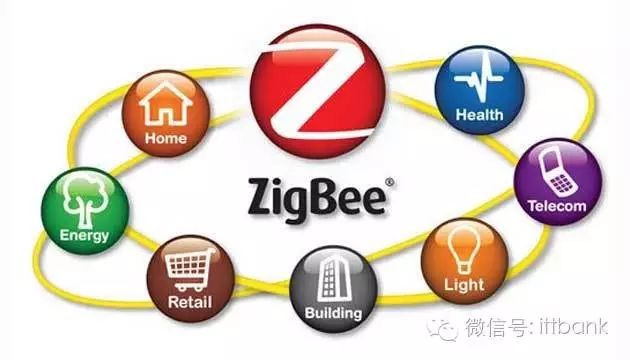

In the field of smart hardware and the Internet of Things, the well-known ZigBee is recognized by everyone. Apart from WiFi and Bluetooth, ZigBee is currently one of the most important wireless communication protocols, mainly applied in the fields of the Internet of Things and smart hardware. The following text provides a detailed introduction to various aspects of ZigBee in a Q&A format. To put it mildly, everything you need to know about ZigBee is right here!

Historical Origins
What technology did ZigBee originate from? During the use of Bluetooth technology, people discovered that although Bluetooth has many advantages, it still has many defects. For industrial automation control and industrial telemetry, Bluetooth is too complex, has a high power consumption, a short range, and a small network scale… As the demand for wireless data communication in industrial automation becomes stronger, this wireless data transmission must be highly reliable and able to resist various electromagnetic interferences in industrial environments. Therefore, after long-term efforts, the ZigBee protocol was officially introduced in 2003. Additionally, ZigBee utilizes the Home RF Lite communication protocol, which was studied before it.
What is ZigBee? Firstly, ZigBee is synonymous with the IEEE802.15.4 protocol. According to the specifications of this protocol, it is a short-range, low-complexity, low-power, low-data-rate, low-cost bidirectional wireless communication technology, primarily suitable for automatic control and remote control applications, capable of being embedded in various devices, while also supporting geolocation functionalities. Since bees communicate the location and distance of pollen sources to their companions through flying and buzzing (zig) movements, the inventors of ZigBee vividly used this behavior of bees to describe this wireless information transmission technology.
What are the characteristics of ZigBee technology? The main characteristics of ZigBee are as follows:
-
(1) Low Power Consumption: In low-power standby mode, two AA batteries can support a node for 6-24 months or even longer. This is a significant advantage of ZigBee. In comparison, Bluetooth can work for a few weeks, while WiFi can only work for a few hours;
-
(2) Low Cost: By significantly simplifying the protocol, the cost is very low (less than 1/10 of Bluetooth), reducing the requirements for communication controllers. According to predictive analysis, with an 8051 8-bit microcontroller, a fully functional main node requires 32KB of code, while a functional sub-node requires as little as 4KB of code. Moreover, ZigBee’s protocol patents are free;
-
(3) Low Data Rate: ZigBee operates at a communication rate of 250kbps, meeting the application needs for low data rate transmission;
-
(4) Short Range: The transmission range is generally between 10 to 100 meters, and can be increased to 1-3 kilometers with enhanced RF transmission power. This refers to the distance between adjacent nodes. If communication is relayed through routing and nodes, the transmission distance can be extended further;
-
(5) Short Delay: ZigBee has a fast response time, generally taking only 15ms to transition from sleep to working state, and 30ms for a node to connect to the network, further saving energy. In comparison, Bluetooth requires 3-10 seconds, and WiFi requires 3 seconds;
-
(6) High Capacity: ZigBee can adopt star, cluster, and mesh network structures, with one main node managing several sub-nodes, and a single main node can manage up to 254 sub-nodes; additionally, the main node can also be managed by a higher-level network node, allowing for a large network of up to 65,000 nodes;
-
(7) High Security: ZigBee provides three levels of security modes, including no security settings, using an Access Control List (ACL) to prevent unauthorized data access, and employing Advanced Encryption Standard (AES128) symmetric encryption to flexibly determine its security attributes;
-
(8) License-Free Band: It utilizes direct-sequence spread spectrum in the 2.4GHz (global) band for industrial, scientific, and medical applications.
Why is ZigBee said to meet the growing demand for reliable wireless data transmission in industrial automation? ZigBee technology itself was developed because Bluetooth technology could not meet the demand for low data volume, low cost, low power consumption, and high reliability in wireless data communication within industrial automation. For industrial environments, this wireless data transmission must be highly reliable and able to resist various electromagnetic interferences. ZigBee technology employs a mesh topology structure, automatic routing, dynamic networking, and direct-sequence spread spectrum methods to meet these needs in industrial automation control.
Communication Technology
What protocol does ZigBee use? ZigBee uses the IEEE802.15.4 protocol, which is a low-rate wireless PAN protocol. In terms of standardization, the IEEE802.15.4 working group is primarily responsible for developing the physical layer and MAC layer protocols, while other protocols mainly reference and adopt existing standards. High-level applications, testing, and marketing work will be managed by the ZigBee Alliance. Why does ZigBee wireless communication use the 2.4G band, which is a free band? In China and most other countries worldwide, using radio equipment usually requires payment of frequency usage fees, including mobile communication. However, mobile operators have paid this fee to the state and charge users through number usage fees. When using other wireless devices, you must first apply for a frequency usage license from the relevant state department, and fees are charged based on the frequency, power, and number of your wireless devices. This can amount to several thousand yuan annually. The free band refers to a frequency band designated by each country based on its actual situation, considering consistency with other countries, exclusively for industrial, medical, and scientific research use (ISM band), which can be used without application and free of charge. The 2.4G band in our country is such a band. However, to ensure that everyone can use it reasonably, the state has set corresponding limits on the usage power of wireless transmitting and receiving devices in this band under different environments. For example, in urban environments, the transmitting power cannot exceed 100mW. Is ZigBee only suitable for short-range communication? ZigBee local networks can not only expand by increasing the transmission power and sensitivity of each node module and increasing the number of nodes but can also monitor remote ZigBee control networks through traditional internet connections. However, when expanding, it is important to note that: (1) as the transmission power increases, power consumption naturally increases, and if power consumption becomes too high, the low power consumption advantage of ZigBee will be lost; (2) although the 2.4GHz band is a free band, it must not exceed the maximum power limits set by the radio laws. What are the benefits of ZigBee using direct-sequence spread spectrum communication? Different communication methods within the same frequency band can yield significant differences in results, such as the anti-interference ability, communication security, and reliability of ASK, FSK, FHSS, DSSS, etc. ZigBee systems, like CDMA systems, utilize direct-sequence spread spectrum technology (DSSS), which has strong anti-interference capabilities and high confidentiality and reliability. If you have used communication products based on these two technologies, you will find that the reliability of both is exceptional. Since spread spectrum technology allows for a low signal-to-noise ratio during normal communication, it can still function properly in environments with strong interference. According to calculations and experiments, this is equivalent to a 7dBm increase in receiving sensitivity. It is also less likely to interfere with others. In other words, it can transmit over longer distances with lower power. Below are some references regarding the advantages of spread spectrum technology:
CDMA is a new type of digital cellular technology introduced in 1995 after the launch of digital communication technology worldwide. It utilizes digital transmission methods and spread spectrum communication technology to significantly improve frequency utilization, boasting advantages such as high capacity, wide coverage, low mobile power consumption, and high voice quality, pushing mobile communication technology into a new stage of development. The CDMA (Code Division Multiple Access) cellular system has the following outstanding advantages compared to FDMA (Frequency Division Multiple Access) and TDMA (Time Division Multiple Access) systems:
-
(1) Good anti-interference performance: Due to spread spectrum processing, CDMA has good anti-interference performance and can coexist with narrowband signals in the same frequency band without affecting normal operation.
-
(2) Strong resistance to multipath fading: Multipath fading is a prominent issue affecting mobile communication quality. Typically, spatial diversity, adaptive equalization, and other technologies must be used to overcome it, with a significant fading margin. CDMA systems can utilize multipath signals for path diversity, thus alleviating Rayleigh fading and slow fading caused by physical obstructions, greatly improving communication quality.
-
(3) Increased system capacity: For FDMA and TDMA, once the frequency points or time slots in a cell are allocated, the cell cannot receive new calls, which imposes a hard limit on capacity. CDMA is an interference-limited system, and at a specified interference level, even when the number of users reaches the limit, additional users are still allowed, although this may lead to a decline in voice quality. Service providers can balance capacity and voice quality. CDMA’s precise power control and soft handover technology greatly reduce the strength of interference signals and the required signal-to-noise ratio, effectively utilizing technologies such as voice activation or variable rate voice encoding, diversity reception, and power control. Reports indicate that the signal-to-noise ratio of CDMA is 3.7 times that of DAMPS, 11.2 times that of TDMA, 13.6 times that of AMPS, and 20 times that of FM/FDMA.
-
(4) Good communication quality: CDMA systems utilize direct-sequence spread spectrum technology, applying various diversity techniques such as time, frequency, space, and path diversity to overcome multipath effects, resulting in strong anti-interference capabilities. Additionally, the soft handover technology employed during inter-zone switching ensures communication quality, particularly avoiding ping-pong effects during handovers. This system operates on a broadband low-noise basis, allowing for high redundancy error correction coding and efficient digital modulation technology to ensure high-quality voice and data transmission.
-
(5) High frequency utilization: The same frequency in CDMA systems can be reused in all cells, with a frequency reuse rate of 2/3 (the frequency reuse rate for FDMA and TDMA is 1/7), eliminating the need for frequency configuration like FDMA and TDMA, greatly simplifying cell splitting and microcell introduction.
-
(6) Strong multiple access capability: The multiple access capability of CDMA systems determines the size of multiple access interference between spread spectrum codes, which is related to the spread spectrum coding scheme used, the multiple access interference between users sending signals simultaneously (i.e., the correlation characteristics of the spread spectrum codes), and the allowable reception quality (output signal-to-noise ratio). Therefore, the lower the multiple access interference among users working simultaneously, the lower the allowable reception quality, and the stronger the multiple access capability of CDMA technology.
-
(7) Highly reliable confidentiality and security: The CDMA mobile communication system is a secure communication system. If certain encryption algorithms are added, the communication confidentiality can be greatly enhanced, which FDMA and TDMA systems cannot compare with. Analyzing the spread spectrum system used, intercepting others’ communication content is nearly impossible, as long as the lithium battery inside does not run out, it changes its sequence’s instantaneous state at a clock frequency of 512KHz. Even if continuously operating, its spread spectrum address sequence can last for up to 7 years. It can also conveniently set and change the main key, sub-key, spread spectrum code table, standard encryption algorithm, etc., within the CDMA system, making the communication confidentiality even more reliable.
-
(8) Low mobile power consumption: After power control is adopted, CDMA only raises the transmission power level during fading periods, thus reducing the average transmission power. The minimum power for FDMA is 5mW, the average transmission power is 794mW, and the peak power is 3W, while CDMA’s minimum power is 2.3mW, the average transmission power is 5mW, and the peak power is 100mW. This shows that CDMA’s average and maximum transmission power are lower than that of FDMA, thereby increasing system capacity, reducing the number of cells, and lowering equipment costs.
What are the characteristics of ZigBee compared to existing data transmission radios? Its advantages are as follows:
-
(1) High reliability: Due to the high integration of ZigBee modules compared to general data transmission radios, there are fewer discrete components, thus enhancing reliability;
-
(2) Convenient and safe to use: Because of its high integration, ZigBee receiving modules can be made very small compared to general data transmission radios, with low power consumption, and the maximum transmission current is much smaller than that of a CDMA phone, making it easy to integrate or directly place into devices, not only convenient for use but also less prone to damage when carried outdoors;
-
(3) Strong anti-interference capability, good confidentiality, and low error rate: ZigBee transceiver modules use 2.4G direct-sequence spread spectrum technology, which has better anti-interference capability and longer transmission distances compared to general FSK, ASK, and frequency-hopping data transmission radios;
-
(4) Free band: ZigBee operates in a free band, while many data transmission radios not only require application but also need to pay considerable frequency usage fees annually to the state frequency commission;
-
(5) Low price: The price of ZigBee data transmission modules is only a fraction of that of data transmission radios with similar functions.
Network Technology
What kind of wireless data transmission network does ZigBee have? In simple terms, ZigBee is a highly reliable wireless data transmission network, similar to CDMA and GSM networks. ZigBee data transmission modules are akin to mobile network base stations. The communication distance ranges from a standard of 75 meters to several hundred meters or kilometers, and it supports wireless expansion. ZigBee is a wireless data transmission network platform composed of up to 65,000 wireless data transmission modules, very similar to existing mobile communication CDMA or GSM networks. Each ZigBee data transmission module is similar to a mobile network base station, and they can communicate with each other across the entire network. The distance between each network node can range from a standard 75 meters to several hundred meters or even kilometers when expanded. Unlike mobile communication CDMA or GSM networks, the ZigBee network is primarily established for industrial field automation control data transmission, thus it must possess characteristics such as simplicity, convenience, reliability, and low cost. In contrast, mobile communication networks are mainly established for voice communication, with each base station typically valued at over one million yuan, while each ZigBee “base station” costs less than 1,000 yuan. Each ZigBee network node can not only serve as a monitoring object, for example, directly collecting and monitoring data from connected sensors, but can also automatically relay data from other network nodes. Additionally, each ZigBee network node (FFD) can wirelessly connect with multiple isolated sub-nodes (RFD) within its signal coverage area. Each ZigBee network node (FFD and RFD) can support up to 31 sensors and controlled devices, and each sensor and controlled device can have up to 8 different interface types. It can collect and transmit both digital and analog signals. What is the self-organizing network used by ZigBee? A simple example can illustrate this issue: when a group of paratroopers parachute down, each person carries a ZigBee network module terminal. Once they land, as long as they are within the communication range of the network modules, they can quickly form an interconnected ZigBee network by automatically finding each other. They cannot determine who is who in advance, and due to personnel movement, their communications may change. Therefore, the modules can refresh the original network by re-finding communication partners. This is the self-organizing network.
Why does ZigBee use a self-organizing network for communication? Mesh network communication is essentially multi-channel communication. In actual industrial fields, for various reasons, it is often not guaranteed that every wireless channel will remain open, similar to city streets that may experience traffic interruptions due to accidents or road repairs. However, having multiple channels allows vehicles (equivalent to our control data) to still reach their destination through alternative routes. This is crucial for industrial site control.
Why does the self-organizing network adopt dynamic routing? Dynamic routing refers to the fact that the data transmission path in the network is not predetermined; rather, before transmitting data, all available paths in the network are searched and analyzed based on their positional relationships and distances, selecting one path for data transmission. In our network management software, path selection employs a “gradient method,” starting with the nearest path for transmission. If that fails, it tries another slightly farther path, and so on, until the data reaches its destination. In actual industrial sites, predetermined transmission paths can change at any time due to various reasons, or may be interrupted or too busy for timely transmission. Dynamic routing, combined with a mesh topology, effectively resolves this issue, ensuring reliable data transmission.
What are the characteristics of ZigBee compared to existing mobile communication networks (GPRS, CDMA-1X)?
Its characteristics are:
-
(1) No network usage fees: Using mobile networks requires long-term payment of network usage fees, calculated by the number of terminal nodes, while ZigBee has no such fees;
-
(2) Low equipment investment: Using mobile networks requires purchasing mobile terminal devices, each priced around 1,000 yuan, while using ZigBee networks not only costs less than 1,000 yuan for each ZigBee network node module (equivalent to a base station), but the primary network sub-nodes (equivalent to mobile phones) are even cheaper;
-
(3) More reliable communication: Existing mobile networks are primarily designed for phone communication. Although CDMA-1X and GPRS can perform data communication, practical experience shows that not only is the communication speed much lower than the designed speed, but the reliability and continuity of data communication are often not guaranteed. In contrast, ZigBee networks are specifically designed for control data transmission, ensuring a considerable guarantee for this transmission;
-
(4) High flexibility and low cost: By using ZigBee network nodes with varying coverage distances and functionalities, along with other low-cost wireless transceiver modules that are not ZigBee-based, a local ZigBee automation control network can be established, which can then connect to remote computers via the internet or mobile networks, achieving low-cost and high-efficiency industrial automation telemetry and control;
-
(5) Although ZigBee is just a local area network, it can expand its coverage “infinitely” by providing sufficient data outlets and can connect with existing mobile networks, the internet, and other communication networks, effectively solving the blind spot coverage issues of mobile networks. We know that existing mobile networks have many blind spots, especially in rural areas such as railways, highways, oil fields, and mines. The cost of adding a mobile base station or repeater is considerable, making the use of ZigBee networks for blind spot coverage not only economical but often the only feasible solution.
How does ZigBee achieve long-distance telemetry and control? ZigBee networks can also connect to the internet, GPRS networks, CDMA1x networks, and other communication systems through interface cards and various methods, allowing for remote control. You can also connect two or more local ZigBee networks through other networks.
Market Applications
What application fields does ZigBee technology cover? The goal of ZigBee technology is to target industrial, home automation, telemetry, and remote control, such as lighting automation control, wireless data collection and monitoring of sensors, oil fields, electricity, mining, and logistics management applications. What requirements for wireless data transmission in industrial sites does ZigBee meet? It requires low power consumption, low data volume (250KPS), low cost, the use of free ISM band (2.4G), high anti-interference performance of direct-sequence spread spectrum communication (DSSS), high confidentiality (64-bit factory number and support for AES-128 encryption), high integration, and high reliability; node modules have automatic dynamic networking capabilities, adopting a topology that includes mesh networks and using collision avoidance mechanisms. Information is transmitted throughout the ZigBee network via automatic routing, ensuring the reliability of information transmission. In what areas can ZigBee expand its applications? ZigBee applications are very broad, targeting industrial automation, home automation, telemetry, automotive automation, agricultural automation, medical care, oil fields, electricity, mining, and logistics management. Actual application examples include lighting control, environmental control, automatic meter reading systems, various curtain controls, smoke detectors, medical monitoring systems, large air conditioning systems, built-in home control set-top boxes and universal remote controls, heating control, home security, and industrial and building automation. Additionally, it can also locate mobile targets, such as vehicles in urban areas.
What conditions must short-range communication meet to consider using ZigBee technology? Generally, short-range communication that meets any of the following conditions can consider applying ZigBee:
-
(1) Multiple points require data collection or monitoring;
-
(2) The amount of data to be transmitted is small, but low equipment costs are required;
-
(3) High reliability and security of data transmission are required;
-
(4) Devices must be compact, making it inconvenient to place larger rechargeable batteries or power modules;
-
(5) Battery power supply is feasible;
-
(6) Complex terrain with many monitoring points requires a larger network coverage;
-
(7) Covering blind spots in existing mobile networks;
-
(8) Systems that already use existing mobile networks for low data volume telemetry and control.
What is the application status of ZigBee technology in China? Although many people in China have begun to pay attention to this new technology and several enterprises have started to engage in ZigBee technology development, considering that ZigBee is a new system integration technology, the development of application software must combine network transmission, radio frequency technology, and underlying hardware and software control technology, which poses certain technical challenges for early-stage developing enterprises. Due to various restrictions, the large-scale commercial application of ZigBee technology still has a long way to go. However, it has already demonstrated extraordinary application value, and with the development and advancement of related technologies, it is expected to see even greater applications. Nevertheless, we must also recognize that wireless networks based on ZigBee technology are just beginning to develop; its technology and applications are far from mature, and domestic enterprises should seize business opportunities, increase investment, and promote the development of the entire industry.
ZigBee Alliance
What is the mission of the ZigBee Alliance? The ZigBee Alliance is a rapidly growing non-profit industry organization, with members including internationally renowned semiconductor manufacturers, technology providers, integrators, and end users. The alliance establishes specifications for network applications based on IEEE802.15.4, ensuring high reliability, cost-effectiveness, and low power consumption.
What are the goals of the ZigBee Alliance? The main goal of the ZigBee Alliance is to provide consumers with more flexible and easier-to-use electronic products by incorporating wireless networking capabilities. ZigBee technology can be integrated into various electronic products, with applications spanning global consumer, commercial, public service, and industrial markets, allowing alliance members to utilize ZigBee’s standardized wireless network platform to design simple, reliable, inexpensive, and energy-efficient products.
What are the focuses of the ZigBee Alliance? Its focuses are on establishing standards for networks, security, and application software layers; providing interoperability and compatibility testing specifications for different products; promoting the ZigBee brand worldwide and seeking market attention; and managing technological development.
What work has the ZigBee Alliance done on standards? The establishment of ZigBee standards includes the physical layer, MAC layer, and data link layer of IEEE802.15.4, which were released in May 2003. Significant progress has also been made in developing the ZigBee network layer, encryption layer, and application description layer, with version 1.0 already released. Other application areas and related device descriptions will be released successively. Since ZigBee is not just synonymous with 802.15.4, and the IEEE only handles low-level MAC layer and physical layer protocols, the ZigBee Alliance has standardized its network layer protocols and APIs. The complete protocol is designed for a basic node capable of connecting directly to one device with 4K bytes or as a Hub or router coordinator with 32K bytes. Each coordinator can connect up to 255 nodes, and several coordinators can form a network with no limit on the number of routing transmissions. The ZigBee Alliance has also developed a security layer to ensure that such portable devices do not accidentally leak their identities and that long-distance transmissions using the network are not intercepted by other nodes. The ZigBee Alliance emphasizes device interoperability: many short-range electronic products embedded with ZigBee modules already have ZigBee functionality, and many various products have reserved interfaces for ZigBee for future upgrades. The development of various gateway products has also advanced, supporting the interconnection of ZigBee systems with home control networks, smart building networks, and commercial networks.
Thanks to the original author for their hard work. If there are any copyright infringements or inappropriate content in the article, please contact us, and we will delete it promptly. Thank you! Phone: 4000933666 or 15818560804,Email: [email protected]

IC Bank : Our world is changing because of technology!

Cloud Egg(ittstore): There is no inventory in this world, just misplaced items!

Global Maker Association(ITTChina): If you are a maker, please come in!
